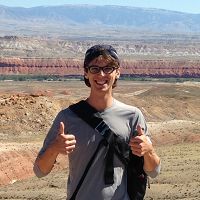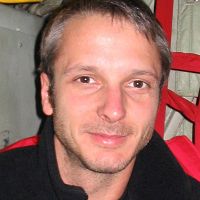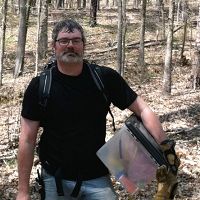Taylor el at., 2015
Using Three-Dimensional Passive Seismic Imaging to Capture Near-Surface Weathering and Its Influence on Overlying Vegetation.
Taylor, N., Dueker, K., Riebe, C., Chen, P., Flinchum, B., Holbrook, S. (2015)
EP53A-0962 Earth and Planetary Surface Processes: General Contribution Posters. presented at 2015 Fall Meeting, AGU, San Francisco, CA, 14-18 Dec.
-
Sierra, GRAD STUDENT
-
Sierra, INVESTIGATOR
-
Sierra, COLLABORATOR, GRAD STUDENT
-
Boulder, Calhoun, Eel, Reynolds, Sierra, COLLABORATOR
Abstract
In mountain landscapes, vegetation is tightly coupled to elevation through orographic effects on temperature and precipitation. However, at any given elevation, vegetation can vary markedly due to non-climatic factors such as lithology. For example, tree-canopy cover correlates strongly with bedrock composition in the Sierra Nevada, California, via mechanisms that remain poorly understood. We are exploring the hypothesis that vegetation varies across bedrock types in the Sierra Nevada due to differences in near-surface fracture density that influence the availability of water for plants. Our approach uses data collected from autonomous seismic nodes that record seismic energy generated by ambient sources such as wind, rivers, and road traffic. By deploying the nodes across the landscape in arrays spanning 200 m on a side, we can obtain a three-dimensional image of spatial variations in near-surface weathering. Data presented here will be derived from arrays deployed for 3 days each spanning an area of 0.04 km2 at each of three sites underlain by Sierra Nevada granites and granodiorites. To isolate the effects of lithology on vegetation, we chose sites that span a range of forest cover and mafic-mineral content but have similar microclimate (i.e., with similar aspect and elevation). Our data will provide a three-dimensional model of P- and S-wave velocity structure, which we can invert using a Hertz-Mindlin porosity model to constrain the thickness and degree of fracturing and thus the subsurface water-holding potential for plants. We will explore the hypothesis that the densest vegetation occurs within bedrock with the densest fracturing, due to enhanced availability of water in the near surface. We will present a comparison of our results from the Sierra Nevada and results from similar experiments at the Snowy Range and Blair Wallis field sites of the Wyoming Center for Environmental Hydrology and Geophysics.
Citation
Taylor, N., Dueker, K., Riebe, C., Chen, P., Flinchum, B., Holbrook, S. (2015): Using Three-Dimensional Passive Seismic Imaging to Capture Near-Surface Weathering and Its Influence on Overlying Vegetation. EP53A-0962 Earth and Planetary Surface Processes: General Contribution Posters. presented at 2015 Fall Meeting, AGU, San Francisco, CA, 14-18 Dec..
Explore Further




